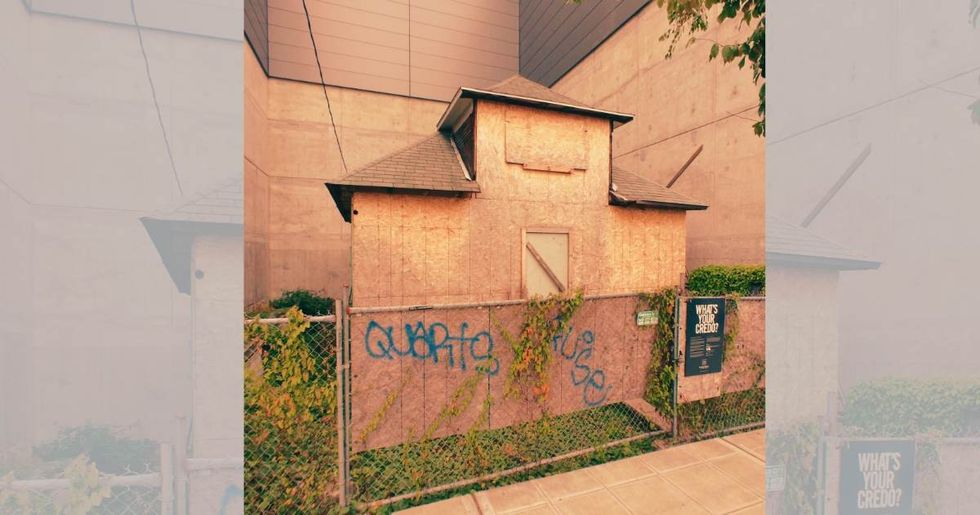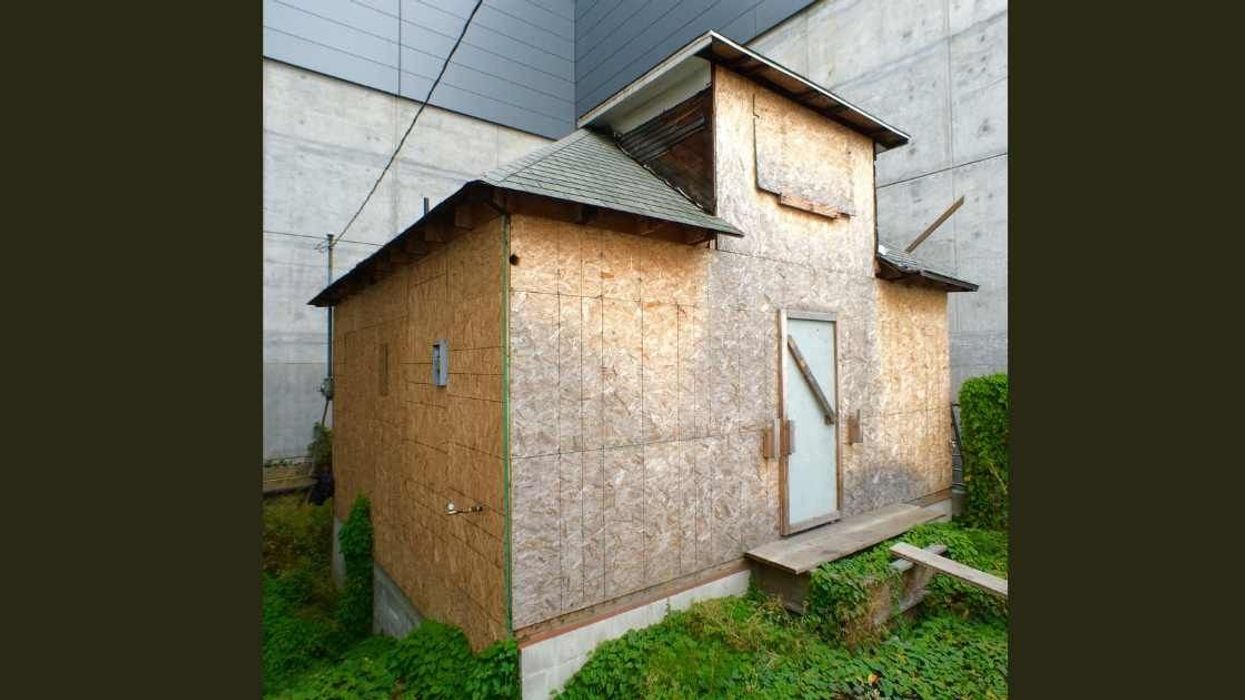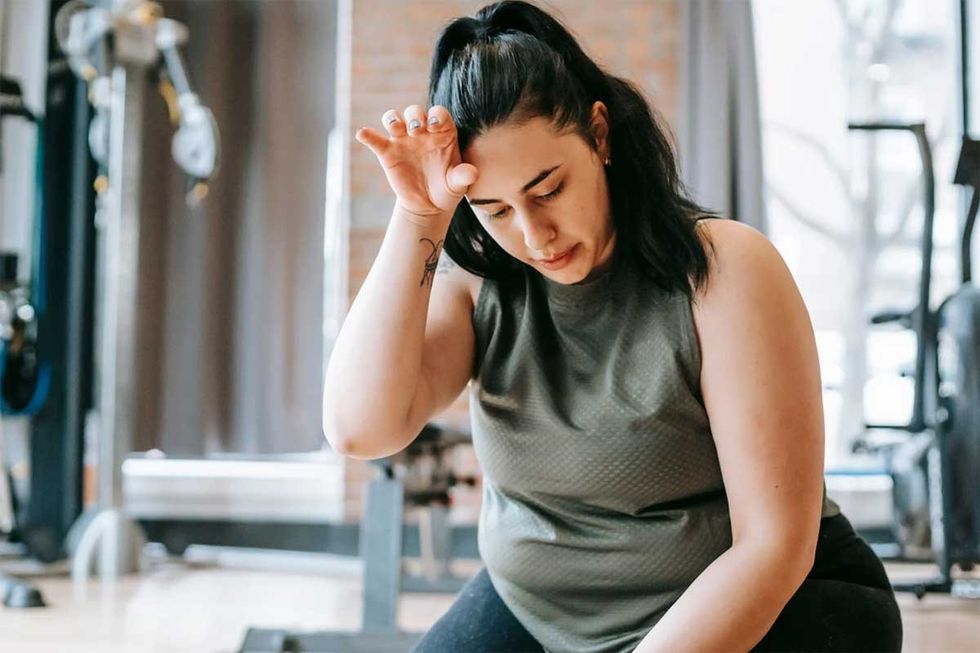Tucked in Seattle’s Ballard neighborhood, close to the 15th Avenue Bridge, is a gray-brown monolith of a house called “Ballard Blocks.” While bouquets of colorful balloons adorn the housefront, its three sides are covered with a shopping complex rabbling with stores, retail outlets, and gyms. The house is more than a century old and was once owned by a stubborn woman named Edith Macefield. During her lifetime, Edith protected this house like a baby. Even when the property workers offered her a million dollars, she stood persistent and didn’t let them demolish her beloved home, per The Sun. In the local area, Edith is revered as a “legend” and “hero.”

Edith first moved into this house in 1952 with her mother. When her mother died, she was left alone, a widower with no relatives or friends. She spent her days writing stories, playing music, and traveling in her blue vintage car. Her house became her sole comfort and she was firm in her decision that if she died someday, it would be only in this house, on the same couch as her mother died.
A few decades later, some developers came knocking at her door, bargaining a huge sum for her to leave the house so they could demolish it and build a shopping mall. First, they offered $750,000 (£576,000), far more than the value she had paid for the house, $3,750. When she declined the offer, they upped it to $1 million (around £770,000). While other homeowners in the neighboring string accepted the offer, she, being a headstrong lady, straightaway refused to move out.
During these everyday negotiations, then the 80-something Edith became close friends with construction manager Barry Martin. In his book “Under One Roof,” Barry described her by writing, “She was so frail and so strong at the same time, vulnerable yet fiercely independent,” per Reader's Digest. Barry liked her company and felt protective of her. Gradually, Barry started assisting her by taking her to a hairdresser and doctor appointments. He would cook meals for her and often buy her hamburgers with vanilla shakes, which, she told him, was her favorite.
In one autumn, after a few years, Edith became so fragile and thin that she had to be taken to the doctor where she was diagnosed with pancreatic cancer. Yet, calm and relaxed, Edith walked out of the hospital and slipped into her little house. Two years later, when Barry walked into her house, on June 15, 2008, Edith had passed away, on the same couch where she had wanted to take her last breaths. She had left her beloved house to Barry.

After the funeral, Barry scoured through the house, going through the things she had left: black-and-white photographs of hers, an old shoebox, sheaves of papers containing short stories she had written, a scrapbook, and a green autograph book, per The Seattle Times. Fast forward a few years, Barry became broke and could no longer afford to keep the house. He ended up selling the house for $310,000 (approx £238,100). He used the money to pay for his children’s college educations.
Edith’s story had been circulating in headlines since 2006. It has been believed that it became an inspiration for Disney-Pixar’s 2009 film “Up,” whose production began in 2004. Like Edith's life story, the film features a stubborn widower who is reluctant to part with his house. For this reason, the property came to be known as the “Up house.”
But the future of the house has been in limbo ever since Barry sold it. According to The Washington Post, the house went to a foreclosure auction in early 2015 and failed to attract bidders. It has since been listed for sale with no asking price; and is currently put up on lease by Regency Centers, the present owner of Ballard Blocks. John Chelico, from the leasing company Kidder Matthews, told My Ballard that they don’t envision any significant changes to the house, but said they’d like to see it turn into a cafe, perhaps with outdoor seating. “Something to make use of the quaint feel of the building.” The property is listed on Commercial Exchange.


















 A symbol for organ donation.Image via
A symbol for organ donation.Image via  A line of people.Image via
A line of people.Image via  "You get a second chance."
"You get a second chance." 


 36 is the magic number.
36 is the magic number. According to one respondendant things "feel more in place".
According to one respondendant things "feel more in place". 
 Some plastic containers.Representational Image Source: Pexels I Photo by Nataliya Vaitkevich
Some plastic containers.Representational Image Source: Pexels I Photo by Nataliya Vaitkevich Man with a plastic container.Representative Image Source: Pexels | Kampus Production
Man with a plastic container.Representative Image Source: Pexels | Kampus Production
 Photo by
Photo by 
 Canva
Canva It's easy to let little things go undone. Canva
It's easy to let little things go undone. Canva
 Teens are waiting longer than at any point in the survey’s history. Canva
Teens are waiting longer than at any point in the survey’s history. Canva Chart on the age of a person’s first time having sex.National Survey of Family Growth/flowing data.com | Chart on the age of a person’s first time having sex.
Chart on the age of a person’s first time having sex.National Survey of Family Growth/flowing data.com | Chart on the age of a person’s first time having sex.